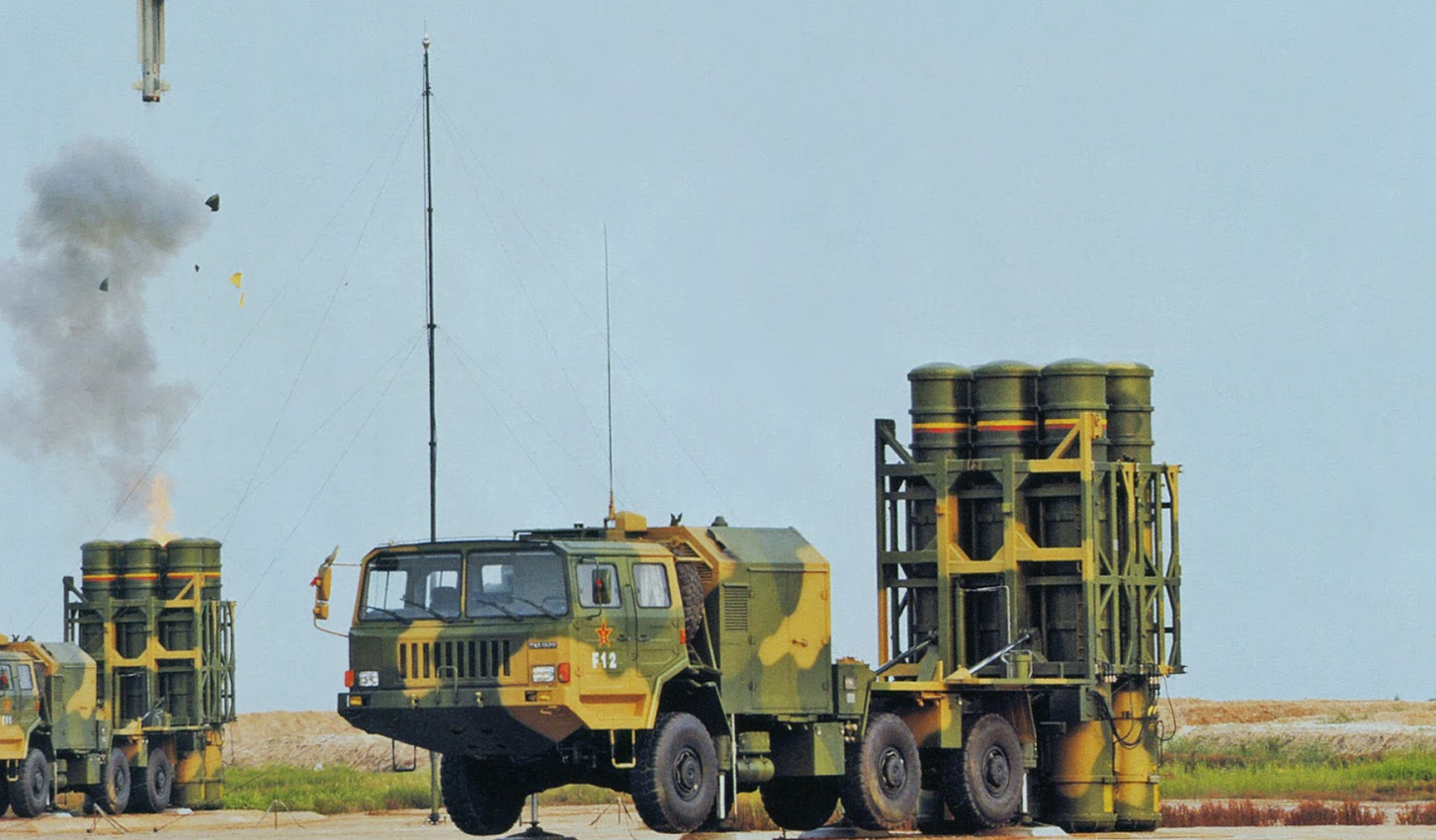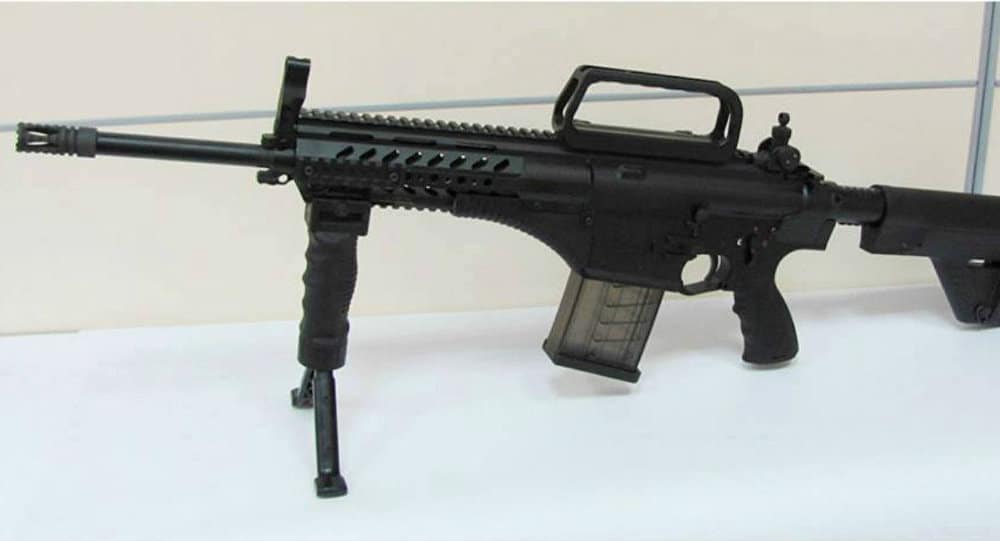2495Views 10Comments

Pakistan’s HQ-16 surface-to-air missile plans
In its most recent annual publication, the Pakistan Ministry of Defence Production (MoDP) disclosed that the armed forces had procured six LY-80 (i.e. HQ-16) surface-to-air missile (SAM) systems from China for $373 million U.S. in fiscal year 2014-2015.
This acquisition appears to be a follow-on from the armed forces’ initial HQ-16 order, which took place in 2013-2014 (for three HQ-16 SAM systems for $226 million and eight IBIS-150 radars for $40 million).
Produced by China Aerospace Science and Technology Corp (CASC), the HQ-16 (export designation: LY-80) is a medium-range SAM system with a maximum intercept range of 40km (Army Recognition).
Each HQ-16 system is reportedly comprised of a command and control vehicle, tracking and guidance radar vehicle, target search radar vehicle, and missile launchers.
The HQ-16 missile itself carries a 70kg warhead and is guided by a semi-active radar-homing (SARH) seeker (which will work in conjunction with the SAM system’s tracking and guidance radar). The missile is also used as a vertically-launched naval SAM in the People’s Liberation Army Navy (PLAN).
Comment and Analysis
It is not clear how many launchers are included within each HQ-16 system. Numerous web sources have suggested that each HQ-16 system (with an IBIS-150 radar) comprises of twelve launchers divided into three batteries (as shown in an illustration provided by Army Recognition), but no official information on this issue is readily available.
If an IBIS-150 radar is an indication of an HQ-16 system, then Pakistan could be ordering up to 108 launchers. However, systems need not be as large as 12 launchers, Pakistan could potentially be deploying system with varying numbers of launchers. It is not known if there will be systems with 12 launchers (or conversely, less than 12 launchers). In any case, the HQ-16 is clearly on-track to forming the medium-range layer of Pakistan’s land-based integrated air defence system (IADS).
It is worth noting that the above-mentioned information is based on the activities of fiscal year 2014-2015, and not the current year. This is an important consideration because another air defence system deal was reportedly on the table in May 2016. Specifics were not given, but it would be safe to assume that this new contract would involve the HQ-16 and/or short-range HQ-7 (in use by the Pakistan Army), though one could speculate that this new deal is in reference to the HQ-9 long-range SAM system.



10 Comments
by Irfan Ullah
Good news that Pakistan is aquaring such advance systems but we need long range systems like S-300 .Any updates about HQ-9 version for Pakistan .
by Mohsin E.
For the HQ-9, I wonder if they’re waiting for the Active seeker to be developed, or maybe they’re trying to get post-launch guidance of the missile integrated into the AWACS platforms via datalinks… Whatever it is, I’ll be surprised if the only reason for the holdup is the cost…
by Bilal Khan - Quwa
Indeed. Even the HQ-16s are not coming “cheap” – thus far we’ve spent a solid $600m+ on these systems, possibly more if additional contracts were inked in the current fiscal year. Even if cost is a factor, we could add it to the financing tab (which we’ve used for the submarines).
HQ-9 is shaping up to be a very interesting system: the active radar seeker, the Type 305A AESA radar, the VERA-esque passive sensors, the HQ-19.
by Mohsin E.
nevermind about the second point actually.. apparently not even the S400 can datalink to AWACS… surprisingly.. thats a capability i wouldve thought would be developed by now..
by Saleem hatoum
I’d a little talk on this issue with one of the seniors at Pakdef and this what was roughly said “nine batteries they have covered a lot of air space and with induction of SPADA, FM-90 and LY-80 Pak istan will have the most extensive SAM coverage to date. There is new Chinese SAM system which has been tested recently HQ-19. It incorporates a lot of Russian tech of S-400 & S-500. It might be just the Pakistan will jump from LY-80 to HQ-19. He further said that and from what Pakistan AD was in 2001 this is a mega jump with LY-80, SPADA, FM-90 plus tons of MANPADS. He added that the reason FM-90 was bought in place of Saab BAMSA cause the Chinese upgraded the FM-90 for Pak speficiations and that some seven-barrel gun is in the pipeline to be part of FM-90.
by Sami Shahid
Why is Pakistan purchasing medium-range SAM’s when it already has FM-90 SAM’s? Pakistan should look for Long-range SAM’s as the US is not ready to provide F-16’s.
by DIAA aHMED
There are many common arms between countries such as Pakistan, Egypt and Egypt Systems has the largest archery center and the command and control of air defense systems and cooperation in the development of common systems upgraded and insurance technical exchange of ammunition, maintenance and Umrah air defense systems of both countries will return interest Vanzmh SKYGARD, CROTAL, SAM-11 and the same it’s in the helicopter MI-17, MI-35 aircraft allows multiple programs of cooperation in this context
by Muhammad Kamran Shaikh
Surprised to see MT hasn’t poke nose yet….
P.S. Brace youselves ladies and gentlemen for usual rant about LCA Tejas would be enough to eliminate all our AD. And some “secret weapon (maybe magic matchsticks) alreadys “indigenously” developed by DRDO to counter HQ-16 and even HQ-9 which we may procure in future.
by Aga Majid
Please read the “great record” of DRDO achievements from their own Indian sources:
http://thediplomat.com/2016/05/did-india-hide-a-failed-supersonic-missile-test/
http://indiatoday.intoday.in/story/drdo-failed-in-its-mission-due-to-delay-high-cost/1/184335.html
by Aanish Chauhan
FM-90’s are short range SAMS. We cant afford long-range SAM’s now because of lack of funds. that’s why its better to atleast have medium range SAM’s.